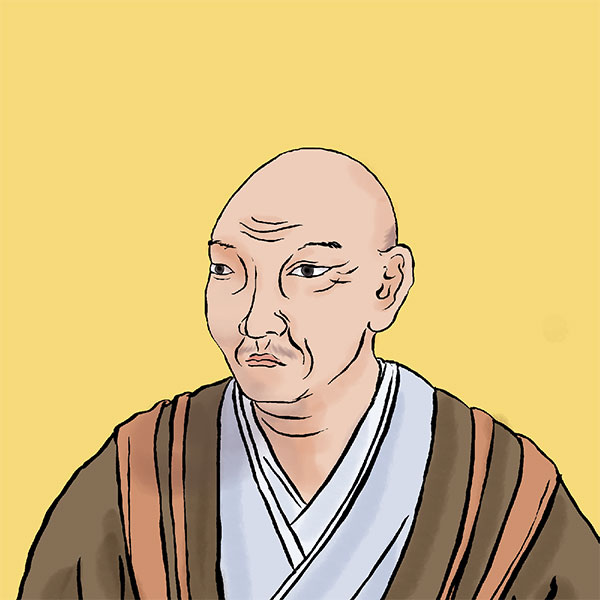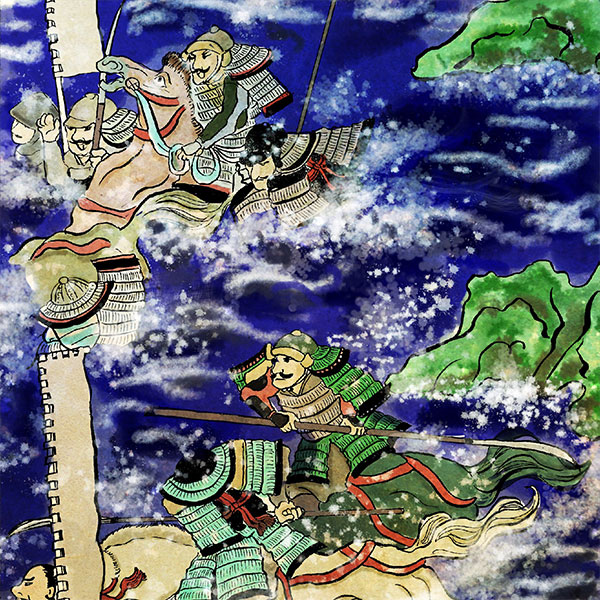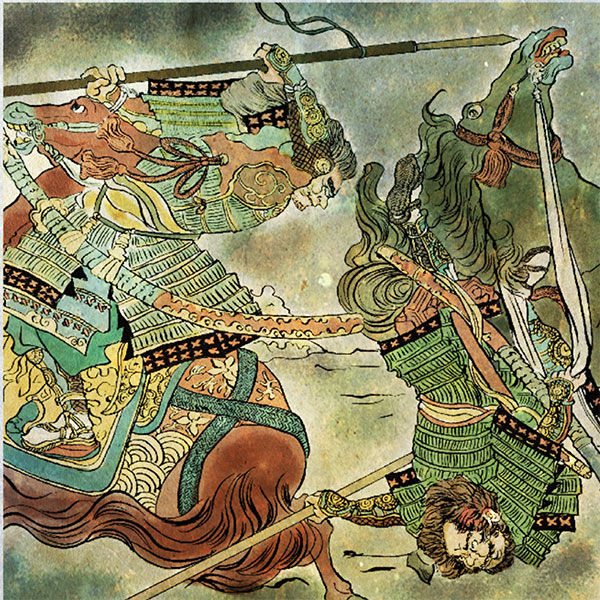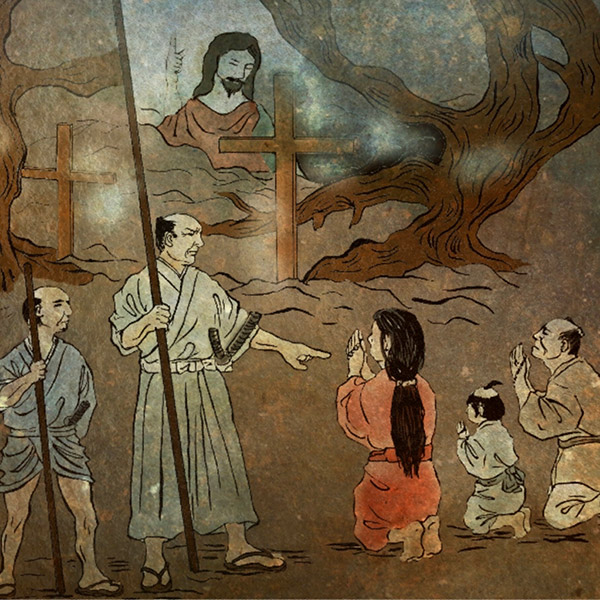Otomo Sorin (1/2)The most famous military commander of the Otomo clan

Otomo Sourin
- Article category
- biography
- name
- Otomo Sorin (1530-1587)
- place of birth
- Oita Prefecture
- Related castles, temples and shrines

Usuki Castle
- related incident
During the Sengoku period, when battles for supremacy were waged across Japan, powerful warlords emerged and fought in the Kyushu region. Among them, the Otomo clan is one of the oldest samurai families along with the Shimazu clan. During the era of Otomo Yoshishige (referred to as Sorin in this article), he expanded his influence the most with the help of his talented vassals, and became famous for his trade with the Ming Dynasty and as a Christian daimyo. This time we will introduce Sorin's life and how he survived the turbulent times based in Bungo Province.
History of Otomo
During the Kamakura period, during the time of the first head of the family, Otomo Yoshinao, the Otomo family was appointed to the Bungo/Chikugo Shugoshu position and the Chinzei Magistrate position. However, there is no record of him going down to Bungo during the time of Noshinao and the second head of the family, Chikahide.
It is said that the person who went to Kyushu was Shigeyoshi Furusho (Shigeyoshi Furusho), a retainer of Yoshinao, and it is said that the illegitimate children of Yoshinao and Chikahide also settled in Bungo around this time. The reason why the Otomo clan was appointed as Bungo Shugo was because Minamoto no Yoritomo's Togoku Gokenin played a role in suppressing Kyushu, which was once the base of the Heike clan and had many samurai families who were retainers of the Heike clan.
During the reign of the third head of the family, Yoriyasu, he moved to Bungo, but it is said that this was to protect a foreign country before his role as Bun'ei. Yoriyasu achieved great military exploits in the battle against the Mongol invasion, and laid the foundation for the rise of the Otomo clan. From then on, the Otomo clan settled in Bungo with its branch family, and expanded its power by seizing territory by adopting the illegitimate children of the clan to local ruling families.
After the fall of the Kamakura Shogunate, the Kenmu Restoration was started by Emperor Go-Daigo, but Takauji Ashikaga defected from Go-Daigo's new administration. Takauji was defeated in a battle in the Settsu region and fled to Kyushu. The Shōni clan welcomed Takauji and defeated the Miyakata Kikuchi clan at the Battle of Tarahama, but the Otomo clan also sided with the Ashikaga clan.
In order to govern Kyushu, the Ashikaga clan left Norihiro Isshiki as Kyushu tandai, moved to Tokyo, occupied Kyoto, and established the Muromachi shogunate.
Furthermore, as the power of the Southern Court was growing stronger in Kyushu, the 9th head of the family, Ujitsugu Otomo, sided with the Southern Court in order to continue his family, but he handed over the headship of the family to his younger brother Chikayo Otomo, who became the 10th head of the family, and the Northern Court side. I will take your side. Although the Ouchi clan temporarily fell during the Oei War, the conflict between Otomo, Ouchi, and Shoni continued from the Muromachi period to the Sengoku period.
In 1431, the 12th head of the family, Mochinao, defeated Morimi Ouchi and continued to secure his rights and interests in Kyushu. However, as Mochiyo Ouchi counterattacked, Okinatsuna, who was an enemy of Chikanao, joined forces with Mochiyo and rebelled, deepening the internal conflict within the Otomo family. Otomo Chikatsuna was called from Higo by the Kyoto shogun Yoshinori Ashikaga to become the head of the Otomo family. This internal conflict was caused by the fact that in 1444, Chikashige of the Ujitsugi lineage became the 15th generation on the condition that he married the daughter of Chikataka of the prolineal lineage and that the son she gave birth to would be the next head of the family. It will fit.
However, after Chikashige's death, the 16th head of the family, Masachika, and the 17th head of the family, Yoshihiro, opposed each other, causing internal conflict, and the Otomo family temporarily declined. In May 1496, Masachika Otomo killed his own son Yoshisho Otomo with poison, and in June, Masachika was forced to commit suicide by Yoshioki Ouchi, putting the Otomo family on the brink of extinction.
Masachika's half-brother Chikaharu (whose mother was not the daughter of Chikataka Otomo, who was descended from the lineage) used his ability to quell internal conflicts, assisted Yoshinaga, the 19th head of the family, and advanced into Higo, becoming a feudal lord in the Sengoku period. I went.
During the time of the 20th head of the family, Yoshikazu, he expanded into Higo and Chikugo. However, in the 2nd floor collapse incident in 1550, Yoshikan was killed by his senior vassals Mimasaka Tsukumi and Norichika Taguchi.
His successor was Sorin Otomo, the 21st head of the family.
From birth to success after succession to the family headship
He was born on January 3, 1530, in Bungo Province, as the eldest son of Yoshikan Otomo, the 20th head of the Otomo clan. The role of Fu is Chikamae Irita, a senior vassal, whose childhood name was Shioboshimaru.
On February 3, 1540, Shioboshimaru celebrated his Genpuku (genpuku), received a letter from Ashikaga Yoshiharu, the 12th shogun of the Muromachi shogunate, and took the name Yoshishige.
When Yoshishige was 20 years old, his father Yoshikane plotted to hand over the headship of the family to Yoshishige's half-brother, Ichimaru Shio, and together with his son, Chikamae IRIDA, planned to disinherit Yoshishige. In February 1550, Yoshishige was forced to go to Beppu Hamawaki for a hot spring treatment, and he used the time to attack Yoshishige's faction (Taguchi Norichika (Kuratosa), Tsukumi Mimasaka, Saito Nagami, Kosai Yamato no kami). A purge was planned, but senior vassals from Yoshishige's faction sensed this move and counterattacked. Shioichimaru and his mother were murdered on February 10th, and Yoshikazu was also injured and died on February 12th (the Nikai-zuru Incident).
According to Yoshikan's will, Yoshishige inherited the headship of the family and became the 21st head of the Otomo clan. At the same time, Irita and other anti-Gishin factions were purged as the masterminds of ``Yoshikan's assassination''.
In 1551, when Yoshitaka Ouchi, the daimyo of Suo Province, committed suicide due to a rebellion by his vassal Takafusa Sue, Yoshishige, who accepted Takafusa Sue's offer, transferred his younger brother Haruhide (Yoshinaga Ouchi) to Ouchi. I will send him as his new head.
With this, the Otomo clan ended the conflict with the Ouchi clan that had existed throughout the Muromachi period, and the Kokujin forces in Kitakyushu that were subordinate to the Ouchi clan were also subordinated to the Otomo clan.
Furthermore, they gained influence in the Suo and Nagato provinces, and in particular gained control of Chikuzen Hakata, which brought great benefits to the Otomo clan.
In 1557, in the 3rd year of the Koji era (1557), Yoshishige escorted Chiang Zhou, the envoy to ban the Wakō, and asked for the distribution of Kango, while Yoshinaga repatriated the Wakō prisoners and sent the Ouchi clan's We will use the "King of Japan" seal to engage in trade.
He also defeated the uprising of his uncle Yoshitake Kikuchi, who was plotting to restore power in Higo Province, and destroyed the Kikuchi clan, taking control of Higo Province. Furthermore, he defeated the Shoni clan and the Ryuzoji clan from Hizen Province, and was appointed as the guardian of Hizen Province in 1554.
However, there was still friction among the Otomo clan's vassals after his father's death (second-story collapse), and furthermore, Yoshishige showed an interest in Christianity and allowed missionaries such as Francisco Xavier to spread Christianity within Otomo territory. , which led to religious conflicts within the Otomo vassals.
In 1553, Ichimanda Kanso [note 4], the Munakata brothers, and Ukyosuke Hattori, and in 1556, Ohara Nobumoto rebelled (surname conflict incident), and Yoshishige His reign was fraught with hardship from the beginning.
In 1557, his younger brother Yoshinaga Ouchi was attacked by Motonari Mori and committed suicide, leading to the collapse of the Ouchi clan, and the Otomo clan lost its influence in the Nagato Suo area. When the Mori clan, which had annexed the former Ouchi clan territory of Nagato Suo, advanced into Kitakyushu, Yoshishige opposed them, destroyed Akizuki Buntane of Chikuzen Province, who had secret communication with the Mori clan, pursued the Mori clan, and invaded Kitakyushu. They succeeded in securing the former Ouchi territory.
Around this time, Yoshishige moved his headquarters from Otomokan in Bungo Prefecture to Nyujima Castle (Usuki Castle).
From middle age to late life
In 1570, he invaded Hizen Province again, but was defeated by Ryuzoji Takanobu at the Battle of Imayama, and his younger brother Chikasada was killed in the battle. Afterwards, they countered by agitating and supporting anti-Ryuzoji forces in Hizen Province and Chikugo Province, but they were unable to prevent the expansion of the Ryuzoji clan's influence. In 1574, Oda Nobunaga won a battle with Shogun Yoshiaki Ashikaga and established power in Kyoto. Yoshiaki was expelled from Kyoto and moved to the Sanyo region in 1576, receiving protection from the Mori clan.
- related incident

- WriterTomoyo Hazuki(Writer)I have loved history and geography since my student days, and have enjoyed visiting historical sites, temples and shrines, and researching ancient documents. He is especially strong in medieval Japanese history and European history in world history, and has read a wide range of things, including primary sources and historical entertainment novels. There are so many favorite military commanders and castles that I can't name them, but I especially like Hisashi Matsunaga and Mitsuhide Akechi, and when it comes to castles, I like Hikone Castle and Fushimi Castle. Once you start talking about the lives of warlords and the history of castles, there's a side of you that can't stop talking about them.






